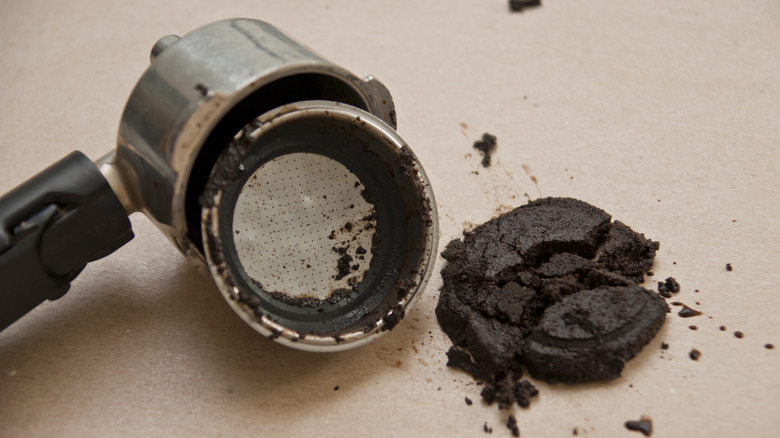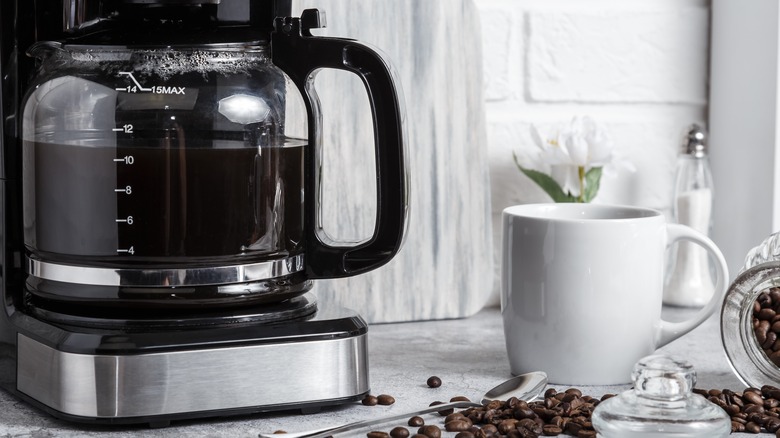The Serious Reason You Can't Let Used Grounds Sit In Your Coffee Maker
Enjoying a homemade cup of joe may be one of life's greatest pleasures, but cleaning out your espresso machine after your morning coffee has brewed can't exactly be considered an equally pleasant experience. Spent coffee grounds don't smell particularly appealing, and if you're not careful, they can also create quite a mess. Leaving used grounds in your machine — regardless of whether you've got an espresso or drip coffee maker — isn't an option either, because not only do grounds get sticky and more difficult to remove over time, the damp organic material becomes a hotbed for microorganism growth.
While there is a concern that the grounds provide a perfect place for germs to thrive, University of Arizona professor of microbiology Charles Gerba, PhD says bacterial growth is not the problem — but this is only because studies have shown coffee can be a germicide. Gerba told Prevention, "A lot of people leave the coffee grounds in the machine, and they stay moist. Mold has a better chance of growing in there than bacteria." When grounds don't have the opportunity dry out, coffee machine owners can expect to end up dealing with a filter full of fungus, which would be quite troublesome to clean. This will hold true regardless of the type of coffee maker you use.
Keep the rest of your coffee maker clean as well
Unfortunately, just because coffee itself has germ-fighting properties doesn't mean your java machine is cleaner than the other gadgets in your kitchen. One test showed that a coffee machine's water reservoir (the drip area where the coffee exits the grounds basket) as well as the pot's handle have been known to play host to a significant number of potentially harmful bacterial colonies. And if the idea of using a potentially germ-infested machine doesn't bother you, the thought of drinking unpleasant tasting coffee might. Coffee oils can collect in places that aren't properly cleaned, and when they inevitably turn rancid, these oils will have an impact on a fresh cup or pot of coffee, making it taste bad.
All types of coffee makers should be cleaned thoroughly each time they are used. Traditional espresso makers need to have their steam wands wiped down with a clean cloth, and heads and filters should be brushed to keep coffee grounds from building up. Similarly, drip trays and waste containers should be emptied when they are full. Professor Gerba recommends using soap and water to clean all the removable parts of your coffee machine, and drying them out with paper towels, since your kitchen sponges may already be contaminated with germs that will end up on your machine.

